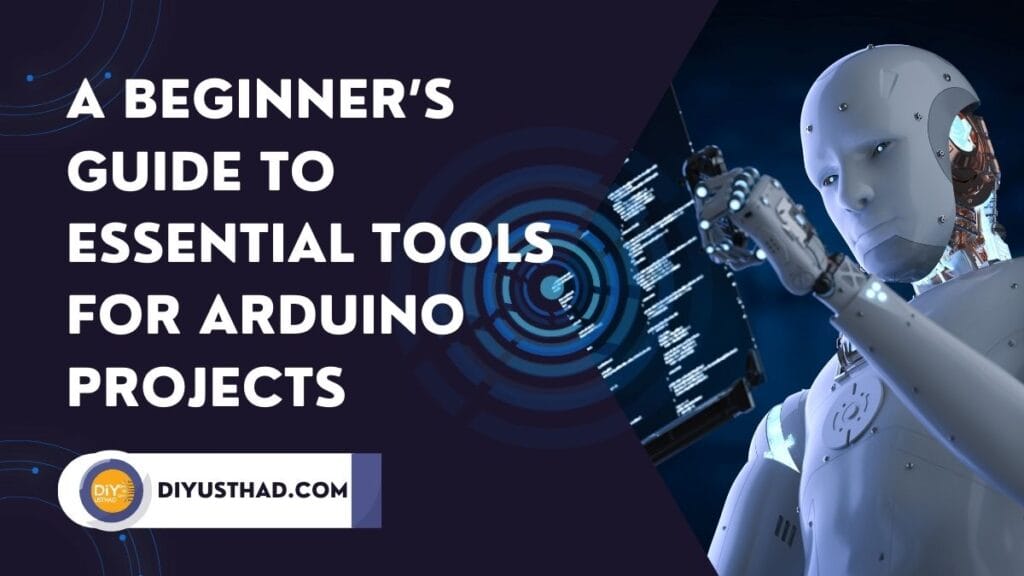So, you’ve heard about Arduino and are curious about building your first project? Awesome! Arduino makes it super easy to dive into electronics, even if you’re not a math or physics whiz. But before you can create that epic project you’ve been imagining, you’ll need some tools.
This guide is all about the Essential Tools for Arduino Projects—and maybe even leveling up to more advanced stuff. Every tool I mention here is one I personally use, so this isn’t just a list pulled from thin air. These are the real deal.
Starting Small: Don’t Buy Everything at Once
I know, looking at all the tools can be intimidating. It’s a lot, and I didn’t buy them all at once either. I’ve been collecting these over years. The good news? You don’t need to start with everything. Start small, get the basics, and build your collection as you go.
Oh, and don’t let “building epic things” scare you. Arduino simplifies electronics with its easy-to-learn programming language and straightforward connections. You can learn the basics in just one weekend!
So, let’s talk about the essential tools to kickstart your Arduino journey.
The Essential Trio: Arduino, Breadboard, and Jumper Wires
1. The Arduino Board
The star of the show! Arduino boards are tiny circuit boards you can program to control other components. If this is your first board, go for the Arduino Uno. It’s versatile, fast, and beginner-friendly.
You’ll find two types of Arduino boards: genuine and clones. Genuine ones support the company, but clones are cheaper and work just as well for beginners. Your call!
2. Breadboard
Think of this as your playground for circuits. Breadboards let you prototype circuits without soldering. Look for one with power rails on the sides and a gap in the middle—it’s great for working with components that have pins on both sides.
3. Jumper Wires
These are the connections between your Arduino and breadboard. Get three types:
- Male-to-male for breadboard connections.
- Male-to-female for connecting to Arduino pins.
- Female-to-female for connecting components directly.
Building Your Component Arsenal
Once you’ve got the basics, you’ll need components to bring your ideas to life. Things like LEDs, resistors, motors, and sensors. Instead of buying them one by one, grab a starter kit. These kits usually include everything you need: an Arduino, breadboard, jumper wires, and a bunch of components to experiment with.
The Unsung Hero: Multimeter
Electricity is invisible (unless something’s on fire, but let’s avoid that). A multimeter helps you measure voltage, current, and resistance, ensuring your circuits work as expected.
For starters, get a cheap one—mine cost about $20 and has lasted three years. Here’s what it does:
- Measure voltage: See how much juice is flowing.
- Measure current: Check how much power your circuit is using.
- Check resistance: Test components like resistors.
- Continuity test: My favorite! It beeps when a connection works, helping you spot broken wires.
Next-Level Tools: When You’re Ready to Upgrade
Soldering Tools
If you want to make your circuits permanent, you’ll need a soldering iron, solder wire, flux, and tools to remove solder like a solder sucker. Start with a basic soldering setup and upgrade if needed.
Heat Shrink and Wire Strippers
Heat shrink tubing protects your connections, and wire strippers make cutting wires to size easy.
Reliable Power Supply
The Arduino can power small projects, but for bigger ones, you’ll need a power supply where you can control voltage and current.
For the Serious Makers: PCBs, Oscilloscopes, and 3D Printers
If breadboards are level one and soldering is level two, then printed circuit boards (PCBs) are level three. They make your projects neater and more reliable.
An oscilloscope takes things further by showing voltage changes over time. While not essential for beginners, it’s a game-changer for advanced projects.
Finally, a 3D printer lets you create custom enclosures or mechanical parts for your projects. It’s the ultimate tool for bringing ideas to life.
Ready to Build Something Epic?
Starting with Arduino is easier than it seems. With just a few tools, you can create amazing projects, learn a ton, and have fun along the way. If you’re feeling stuck or overwhelmed, don’t worry—I’ve been there too.
Happy building! Got questions? Drop them in the comments—I’d love to help.

